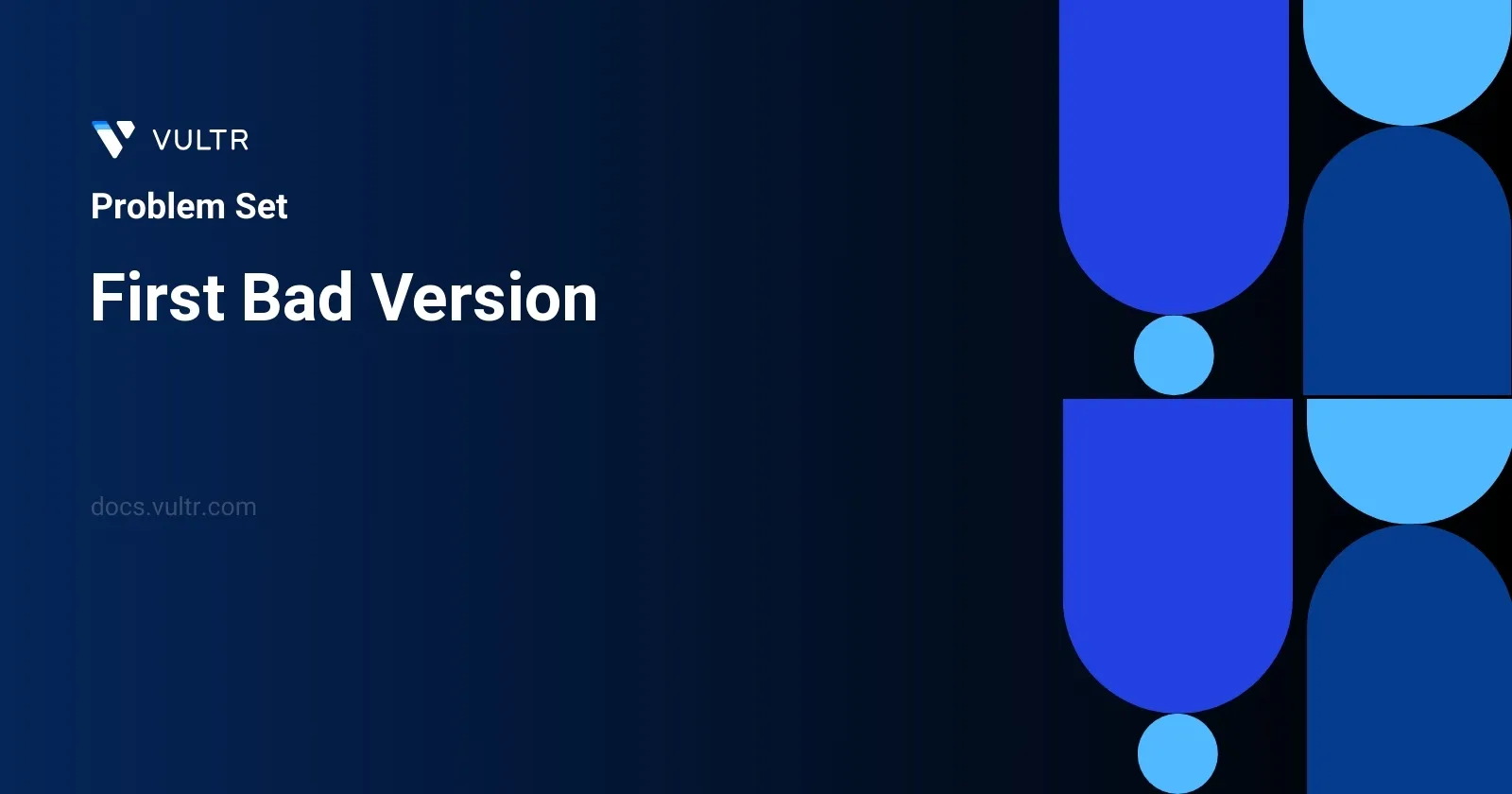
Problem Statement
In the context of software development, managing different versions of a product is critical, especially when identifying defective (bad) versions that may affect subsequent releases. As a product manager in such a scenario, your objective is to find the earliest bad version from a sequential list of versions labeled from 1 to n. Once a version is identified as bad, all subsequent versions are also deemed bad due to cumulative updates and dependencies.
You are provided with a helper function isBadVersion(version) that returns a boolean indicating whether a given version is bad. The challenge lies in minimizing the number of API calls made to isBadVersion() to efficiently determine the first bad version in the sequence.
Examples
Example 1
Input:
n = 5, bad = 4
Output:
4
Explanation:
call isBadVersion(3) -> false call isBadVersion(5) -> true call isBadVersion(4) -> true Then 4 is the first bad version.
Example 2
Input:
n = 1, bad = 1
Output:
1
Constraints
1 <= bad <= n <= 231 - 1
Approach and Intuition
The problem is essentially about finding the first occurrence of a bad version when versions are arranged sequentially. Given the nature of the problem where all versions subsequent to a bad version are also bad, we realize we can employ a binary search technique to optimize our search:
- Start with two pointers:
leftinitialized at 1, andrightinitialized at n (the total number of versions). - Calculate the midpoint
midusing the formulamid = left + (right - left) / 2. - Use the
isBadVersion(mid)function to check if the midpoint version is bad:- If
isBadVersion(mid)isfalse, it means that the first bad version must be aftermid, thus setlefttomid + 1. - If
isBadVersion(mid)istrue, it could be the first bad version, but there might be earlier bad versions. Thus, setrighttomid.
- If
- Continue the process until the
leftpointer matches therightpointer, which will then point to the first bad version.
This binary search approach reduces the potential number of isBadVersion() calls from n (in a worst-case linear scan) to log(n), improving efficiency significantly.
By analyzing examples:
- For n = 5 and the first bad version at 4, the method gradually narrows down the range from 1-5 to 4-5, pinpointing version 4 using just three checks.
- In a minimal case where n = 1 and it itself is bad, the approach quickly identifies the version as bad in a single check.
The constraint 1 <= bad <= n <= 2^31 - 1 assures us that our approach is efficient even for large values of n, fitting within reasonable computational limits.
Solutions
- Java
public int findBadVersion(int total) {
int start = 1;
int end = total;
while (start < end) {
int middle = start + (end - start) / 2;
if (isBadVersion(middle)) {
end = middle;
} else {
start = middle + 1;
}
}
return start;
}
This solution is aimed at identifying the first bad version in a series. Implementing a binary search algorithm in Java, the provided function, findBadVersion, efficiently narrows down the range of potential bad versions to determine which was the first to fail.
Initialize two pointers,
startat 1 andendat the total number of versions.Use a binary search:
- Calculate
middleby averagingstartandend, adjusted for integer division. - If
middlepoints to a bad version, adjustendtomiddleas any version after and includingmiddlecould be the starting point of bad versions. - If
middleis not a bad version, adjuststarttomiddle + 1as the first bad version must be aftermiddle.
- Calculate
When
startequalsend, they point to the first bad version.
The function returns start as the first bad version. This process reduces the number of checks significantly compared to a linear search, optimizing the process for larger data sets. Ensure an implementation of isBadVersion(version) API method is available to utilize this function effectively.